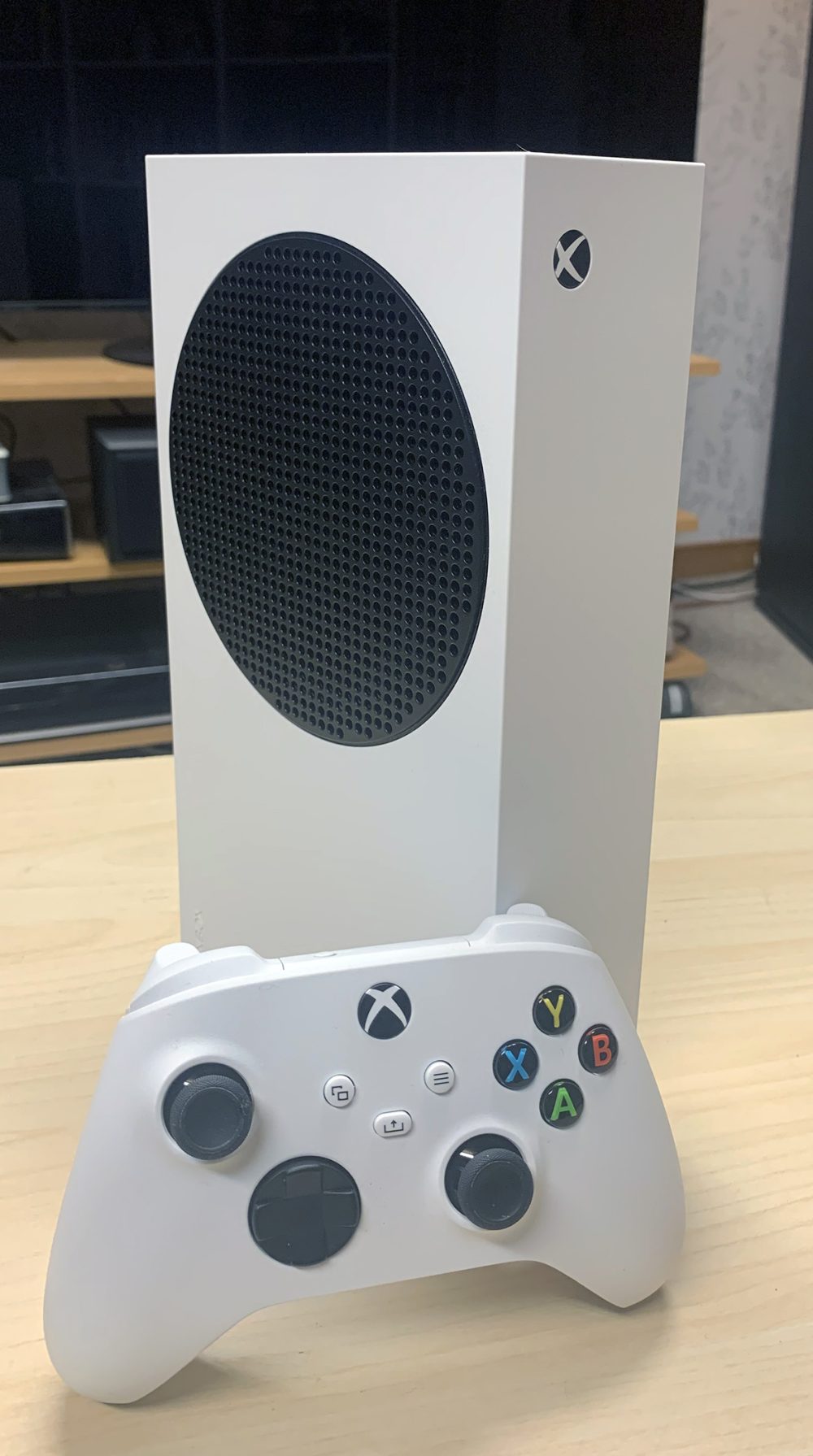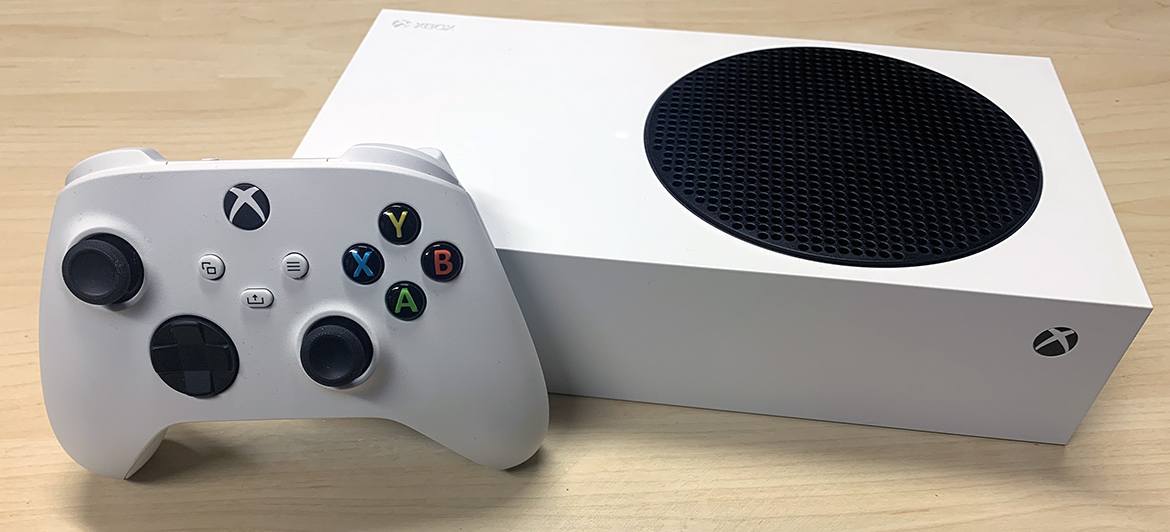TL;DR
Thinking about the Xbox Series S? This review dives deep into how it stacks up against the Series X, focusing on its compact size, impressive 120fps gaming capabilities, and the sheer value it offers, especially with Game Pass. While it sacrifices 4K for a crisp 1440p and lacks a disc drive, its significantly lower price point makes it a fantastic entry point into next-gen gaming. Discover if its performance and features are the right fit for your setup. Read on for the full breakdown!
We reviewed the Xbox Series X on senses.se upon its release. Therefore, this review will primarily address the differences between the flagship X and its sibling, the Series S.

The Xbox Series S boasts a significantly smaller form factor – approximately half the size of the Xbox Series X. Internally, however, the architectures share key similarities. Both consoles support gaming at up to 120fps (frames per second). However, the Series S features a less powerful AMD RDNA 2 GPU with 20 Compute Units (CUs) clocked at 1.565 GHz, and 10GB of RAM, compared to the Series X’s AMD RDNA 2 GPU with 56 CUs at 1.825GHz and 16GB of RAM. As a result, the Series S targets a resolution of 1440p, rather than the full 4K (2160p) achievable on the Series X, when running at 120fps. The GPU power, measured in floating-point operations per second, is also lower on the Xbox Series S, rated at 4 TFLOPS, compared to the X’s 12.15 TFLOPS (the PS5 delivers just over 10 TFLOPS). A key difference, beyond size, is the absence of an optical disc drive in the Xbox Series S, precluding the playback of UHD movies and games distributed on physical media.
We connected the Xbox Series S to our new gaming TV, the Panasonic JZ1500, which supports the latest Xbox features. The console automatically configures optimal settings for the connected display. Note that a TV with 120 Hz support (and full HDMI 2.1 compatibility) is required to leverage the 120fps mode on the Series S. Upon logging into your Xbox account, you can begin downloading games. The combination of Xbox Series S and Game Pass provides a seamless experience, allowing users to easily identify and download the optimized X/S versions of games, as opposed to the older One versions.
We initiated testing by downloading Halo Infinite and Forza Horizon 5 to assess their performance on the console. While these games downloaded, we explored the user interface. The interface is largely consistent with that of the Xbox One. Existing digital game libraries are generally accessible on the new console, with the exception of games owned on physical media due to the Series S’s lack of a disc drive. For games that do not offer free next-gen upgrades, such as The Quarry, reasonably priced updates are often available, enabling access to the improved Series X/S versions.

The Xbox Series S controller shares a similar design with the Xbox One and even the Xbox 360 controllers, reflecting Microsoft’s established ergonomic design. The controller provides a comfortable grip and tactile button feedback. The surface finish imparts a subtly premium feel. Upon launching Halo Infinite, the reduced loading times compared to the Xbox One X were immediately apparent. The game world loaded rapidly. Furthermore, existing save files transferred automatically, enabling seamless continuation of gameplay from the Xbox One.

Historically, a minimum of 24 frames per second was considered necessary to achieve a stable, flicker-free image. This standard evolved to 25 frames per second with the advent of PAL and VHS (or 29.9 frames per second for the American NTSC standard). Peter Jackson experimented with High Frame Rate (HFR) at 48 frames per second in The Hobbit trilogy, aiming for improved fluidity. However, in film, higher frame rates can create a perceived “soap opera effect,” diminishing realism—an issue James Cameron intends to address in upcoming special editions of his classics in 4K. In contrast, higher frame rates in gaming generally enhance the experience, with 60 frames per second often considered a sweet spot.
Having not previously experienced 120fps gameplay, the difference was immediately noticeable. The motion was significantly smoother. In the tested titles, no noticeable lag was observed (although the quality of 120fps implementation can vary across different games). In Halo, which involves frequent engagements with enemies from multiple directions, the Xbox One X occasionally exhibited performance issues, with stuttering occurring during intense encounters. This issue was not observed on the Xbox Series S. Frame rates remained consistently high, even during demanding scenes. The slightly reduced resolution was imperceptible during fast-paced gameplay. Furthermore, the visuals remained consistent, with no noticeable texture pop-in issues during traversal of the large open-world environment in Halo Infinite.
Continuing the evaluation, we tested Forza Horizon 5. The reduced loading times were again apparent. The overall visual fidelity and performance while driving were impressive and enjoyable.
Spatial audio via Dolby Atmos is supported in games, but requires purchasing and installing the Dolby Atmos app, which incurs a cost of approximately 150 kronor (a license is bundled with some headphones). While not a substantial expense, the requirement to purchase this feature separately is somewhat disappointing, given its inclusion in the Xbox’s base specifications. Nevertheless, configuration is straightforward.
The performance difference between the previous generation’s most powerful console, the Xbox One X, and the Xbox Series S is clearly discernible. The Series S offers a demonstrably improved gaming experience, justifying its cost. Currently, the Series S is priced at approximately 3,000 kronor, roughly half the cost of the Xbox Series X. While the Series X offers greater performance, the magnitude of the improvement in gameplay experience does not necessarily justify the price difference, although the inclusion of a UHD 4K Blu-ray player is a notable advantage. However, for users who already own a UHD 4K player, the Xbox Series S represents a compelling value proposition, offering comparable performance at a significantly lower price point.

The primary drawbacks of the Series S are its reliance on older USB 3.1 technology, lacking the more modern USB-C interface. This is an unfortunate limitation, as it results in the console feeling somewhat outdated from a connectivity perspective. Secondly, the console only supports a single external hard drive connection. The internal storage capacity of the Series S is 500GB, half that of the Series X’s 1TB. An external hard drive is therefore practically essential, as modern games can range from 100-150GB in size. As with the Series X, Series S/X-optimized games cannot be launched from an external hard drive, regardless of its speed. Only backward-compatible Xbox One (X) and Xbox 360 games can be played from external storage. Expanding the internal storage requires purchasing Seagate’s proprietary storage expansion card. The inability to install a standard M.2 SSD NVMe drive, as is possible on the PS5, represents a significant disadvantage stemming from Xbox’s proprietary hardware approach.

However, the absence of a physical media drive is mitigated for users of streaming services such as HBO Max, Disney+, and Netflix. These services offer well-optimized Xbox apps, enabling 4K movie playback with Dolby Atmos, albeit at a lower bitrate compared to physical media. A notable omission is the lack of offline download functionality, which can be problematic for users with limited or unreliable internet connections, potentially leading to reduced image quality or playback interruptions. Otherwise, the console handles high-resolution movie playback effectively, with clear Dolby Atmos audio output.
In conclusion, we highly recommend the Xbox Series S. Despite its lower performance relative to the Series X, its significantly lower price point makes it a compelling option. For approximately half the cost, users gain access to a console that delivers a substantial upgrade over the previous generation, combined with the value offered by Game Pass.
Microsoft provided a review unit for this test. The provision of review materials does not influence our editorial independence.

